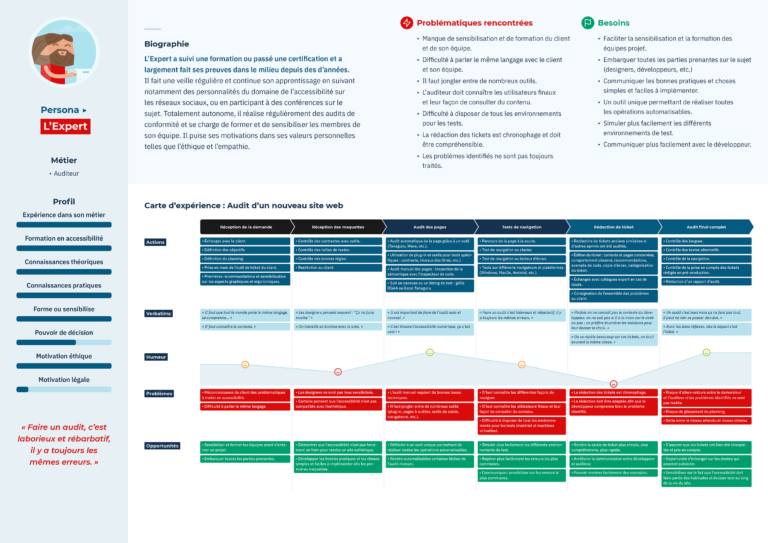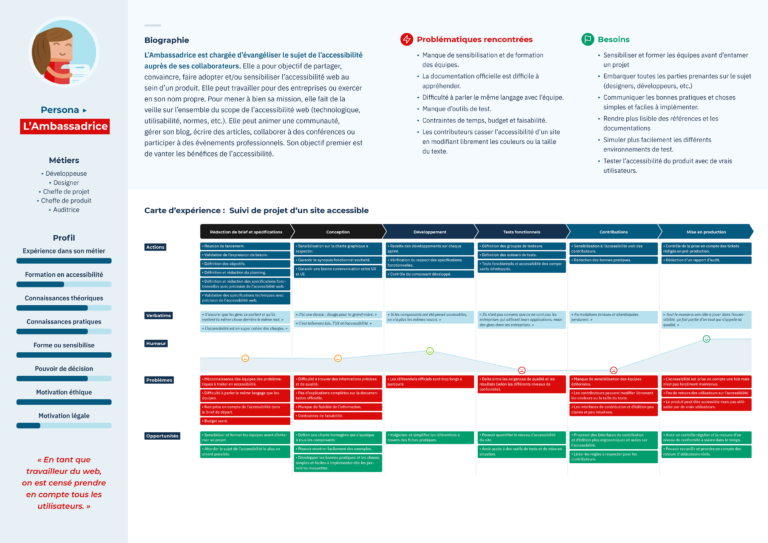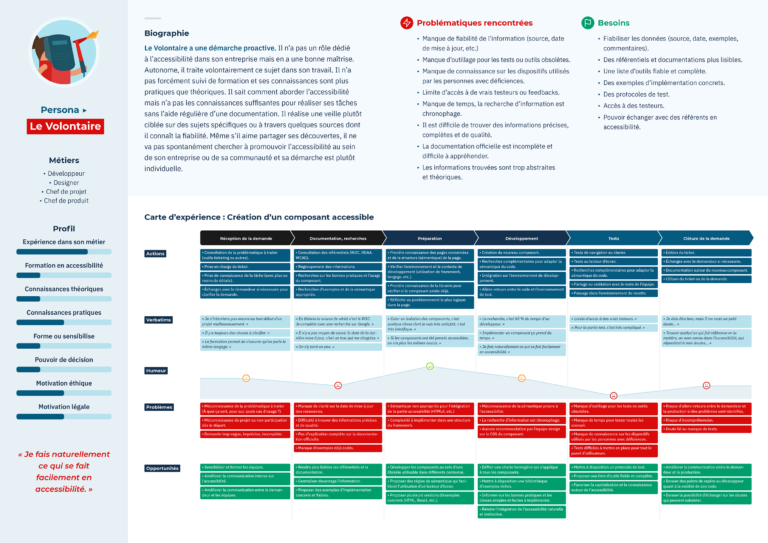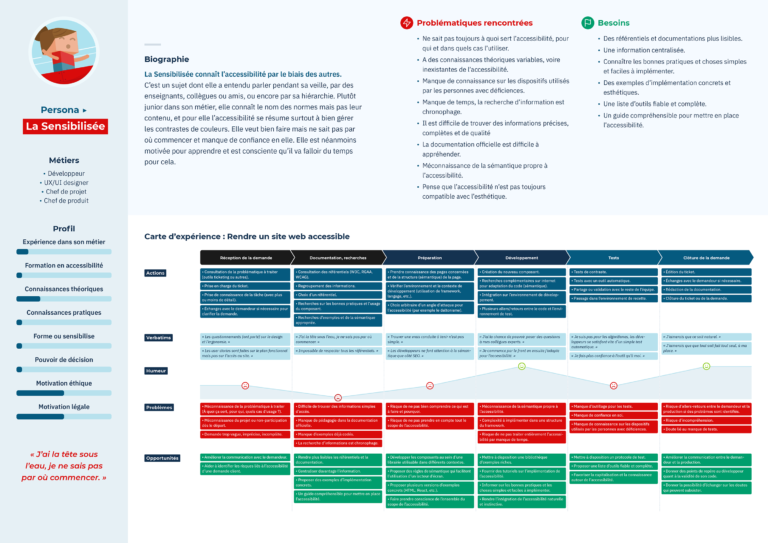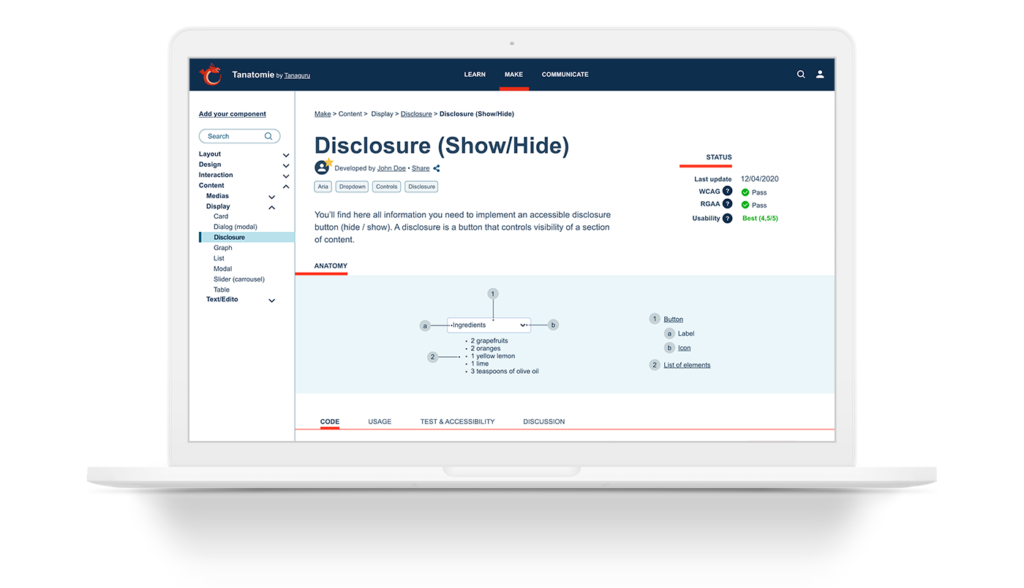Tanatomie
Tanatomie is a digital solution made to facilitate the implementation of digital accessibility, for a more inclusive and fairer web.
We worked as a team for 6 months on this project from the brief to user tests.
Where : Gobelins School x Tanaguru
When : 2020
Documentation
The client
Tanaguru is a multidisciplinary team that offers consulting services and tools dedicated to digital accessibility. Their expertise revolves around 4 axes:
- Raising awareness and training teams,
- Supporting the implementation of digital accessibility,
- Automating tests,
- Developing accessible solutions.
Their Tanatomy project aims to make it easier to take accessibility into account in web projects.
Problems
In addition to the legal obligation imposed by the European law on digital accessibility, three problems are identified:
- The lack of training of teams
- The absence of a tool that centralizes information
- The lack of examples of implementation
Our approach
To carry out our project, we relied on a methodology operating by iterations inspired by Design Thinking.
After theoretical research to understand the issues around digital accessibility, we began our user research by defining the target with Tanaguru. This target quickly appeared too big for us. To reduce our scope and assess our first segmentation, we wrote a questionnaire that enabled us to get quantitative data and to get to know our users better. This same questionnaire also enabled us to recruit users for the rest of the project.
Through interviews, observation sessions and collection of opinions with users, we were able to understand and define the profile, experience, motivation, methods and tools used, difficulties and facilities encountered. This allowed us to confirm several hypotheses: the absence of a complete or reliable source, the fact that the subject remains unknown, the lack of training on the subject and the fact that the problem is very human.
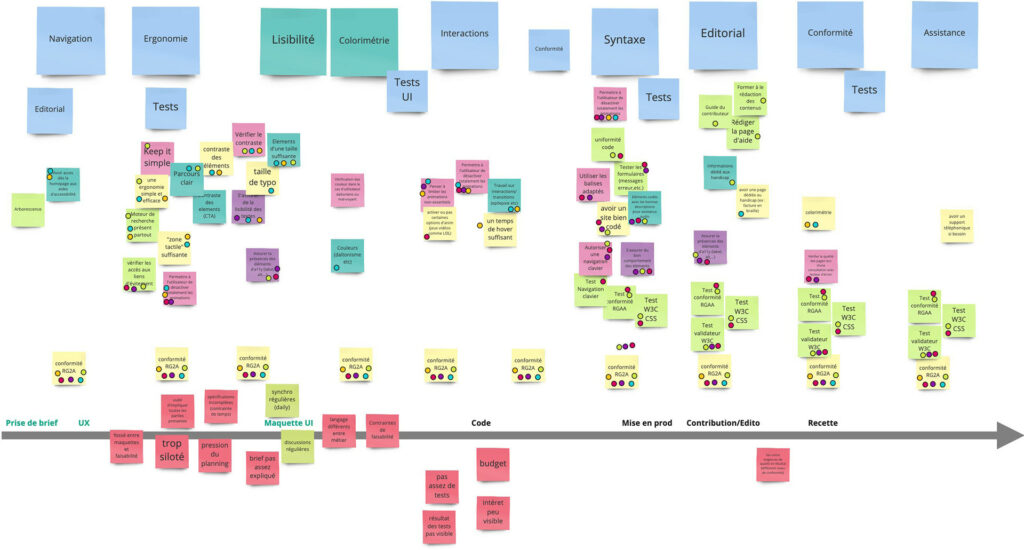
Throughout our study and through workshops, we noted the limits of the business-specific approach, which led us to create our personae: the Expert, the Ambassadeur, the Voluntaire and the Sensibilisé . Moreover, qualitative research has shown us that there are a large number of lines of work. We selected those over which anatomy had a power of action and we deduced the virtuous circle of accessibility.
The « Sensibilisé » is the Accessibility Awareness persona that we have prioritized with our client to answer the questions “How to demonstrate the reliability of information?” and “How can I help find the right information?”.
Our four different personas : Expert, Ambassadeur, Voluntaire and Sensibilisé – Zoom in
The virtuous circle of accessibility
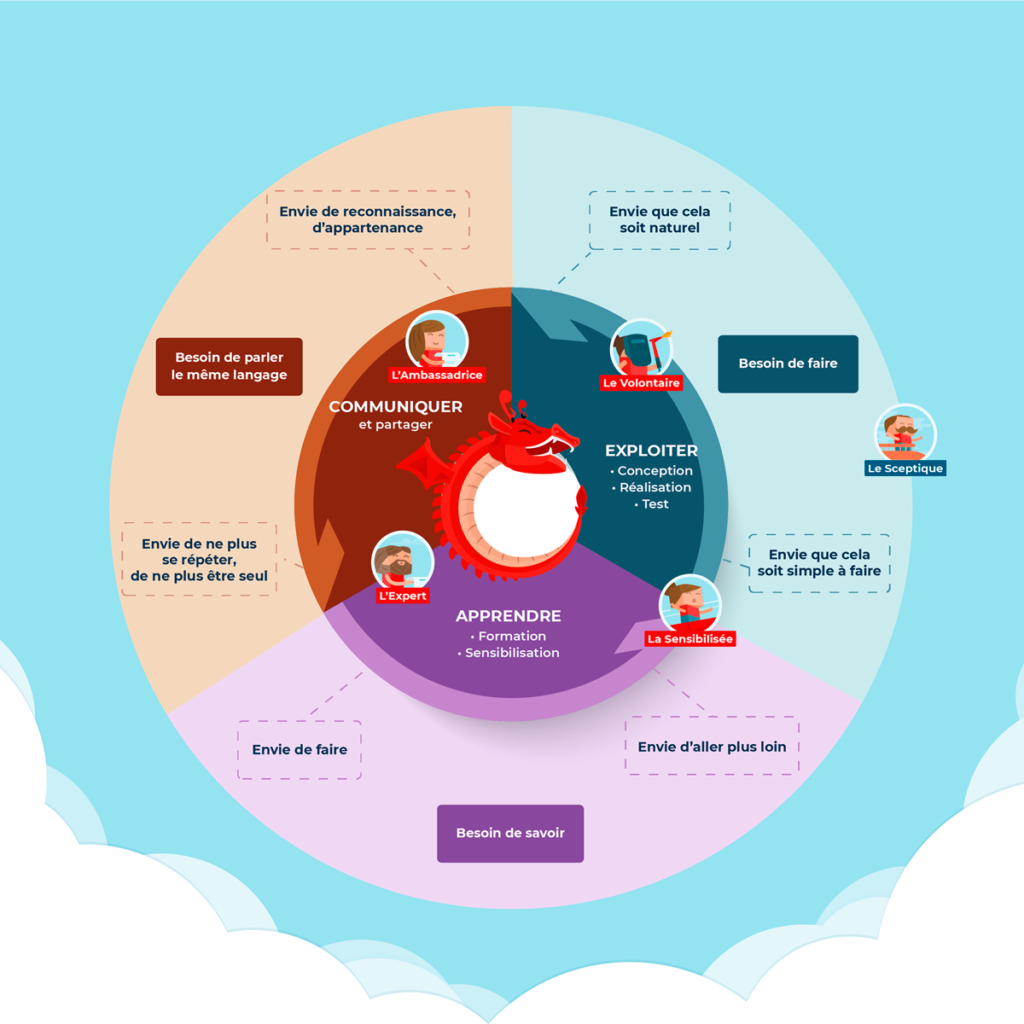
After the first user tests and a workshop on the information architecture, several lessons have allowed us to improve our prototype with a second version that we submitted to a test protocol.
Prototype (Desktop) – Click on the laptop
Our second prototype has been very well received. Some improvements still need to be made but we were able to validate our solution.
To go further in our approach, we suggest ways to our client to design the most complete solution possible, consistent with our virtuous circle. Depending on their profile, the user will be able to:
- Learn through didactic documentation,
- Navigate within the component library thanks to an atomic design structure,
- Ask questions to a community of users to seek expert advice or suggest their contribution to the project.
A responsive version will be required, as well as work on the choice of words to put them at the service of the user experience, by presenting the various information in a clear and concise way.

 Linkedin
Linkedin Instagram
Instagram Behance
Behance Vimeo
Vimeo My tutorials
My tutorials
